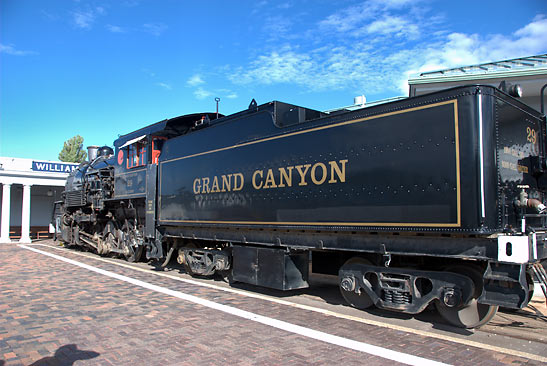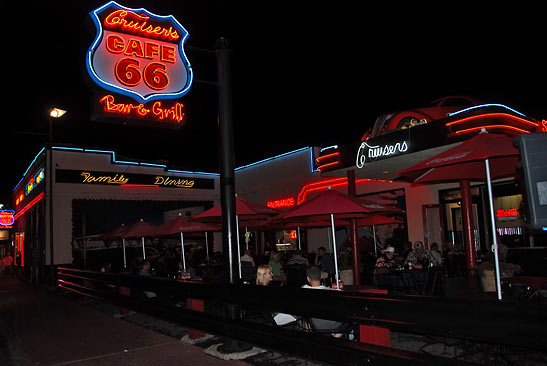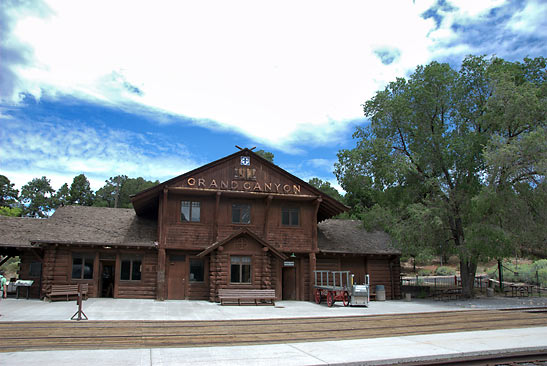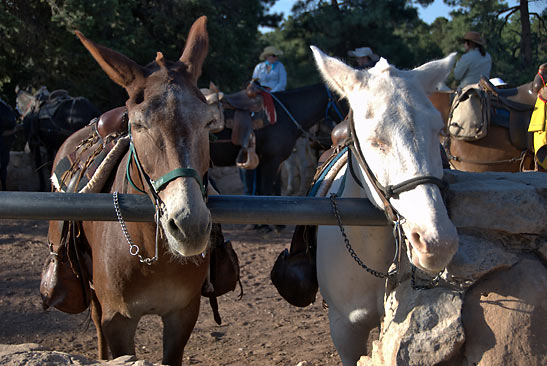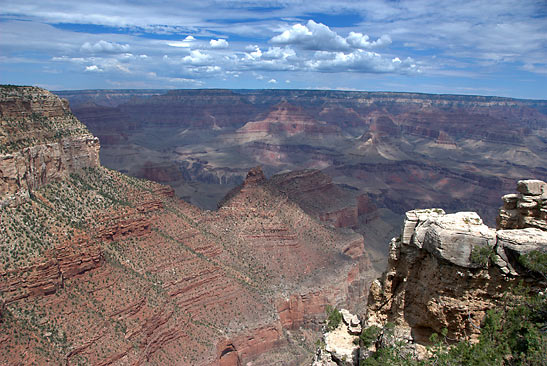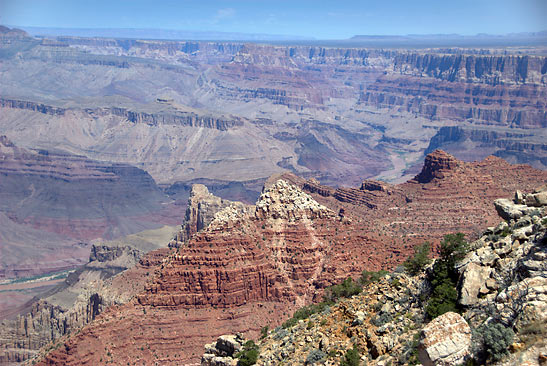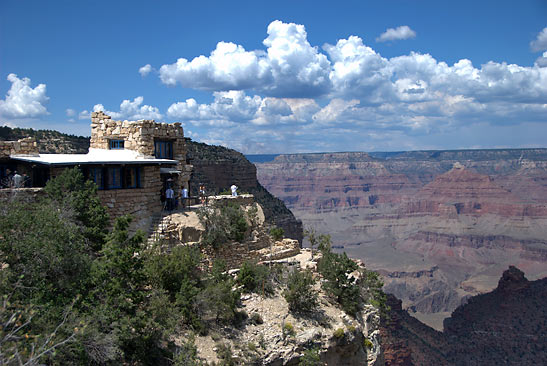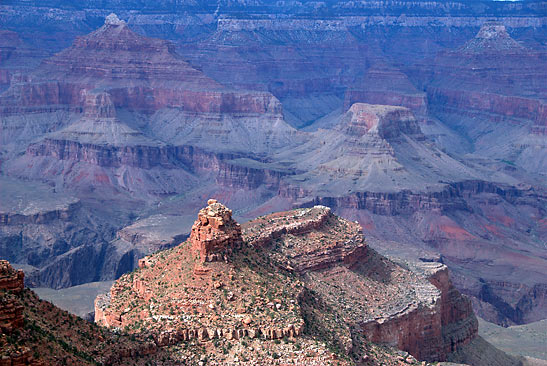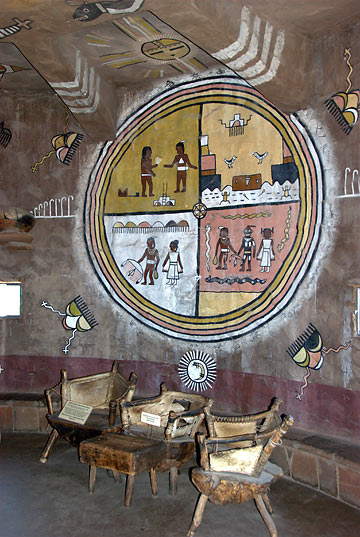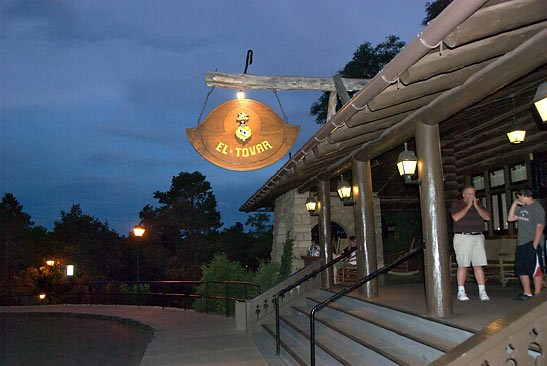 |
 |
|
 |

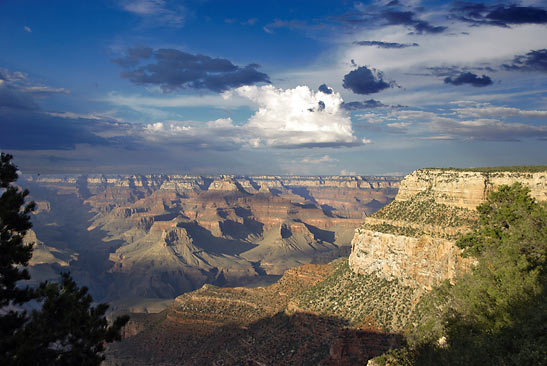 The Grand Canyon is dappled with ever-changing light and shadows. Grand Canyon's Timeless Gift
First glimpse of the Grand Canyon, the eyes are met by implausible layers of textures and colors on steep-sided pinnacles and ancient buttes carved by the wind and rain, a compelling sun, and the mighty Colorado River. The canyon's vastness and the ever changing light, a mystical player of luminosity, effortlessly bewilder the human eye. Deep in the canyon, rock and sediment formed under long forgotten seas more than two billion years ago are now layers of time as revealed across the walls and plateaus in ever-shifting vistas that hint at the infinite in a hypnotizing tug of splendor.
The distance from rim to rim across the canyon's length of 277-river miles varies from four to 18 miles, and plummeting downward a lengthy mile, the canyon walls support five of the seven life zones of the North American Continent (missing only the Subalpine and Alpine Tundra). If only one could be a bird for a day and drift across this grand expanse of glory, lifted by the thermals like a condor on the hunt. However, in flight or not, taking in the ageless scene from any viewpoint can quickly place life in perspective.
Far below the rim, the momentous Colorado River, the indifferent waterway with a defiant agenda, winds tirelessly through the Canyon, a wonder of history, intrigue, and fascinating deception. For a split second a gleam of light reflects off the water like a wandering beacon, a skittering cloud casts patchy hues on stratums of soaring stonewalls, then the light shifts again and the river flattens out into a dark mysterious ribbon.
The untamed river with its try-me-if-you-dare stance, was first tested by the unshakeable and fearless 35-year-old Major John Wesley Powell, a one-armed veteran of the Union Army, who in May of 1869 with 10 courageous men, four bulky boats, and a load of supplies, accepted the challenge. His grueling 98-day, 1,000-mile exploration of the unknown from the Green and Colorado Rivers to the mouth of the Virgin River, through the last significant uncharted expanse of the West is now an essential element of our country's legacy.
Train visitors quickly realize that once inside the Park, the family car is entirely unnecessary; there is little traffic, and the sensation of being encumbered vanishes into the Canyon's vastness. It's easy to find your own little world riding a rented bicycle to an overlook where demanding squirrels scamper about, or hopping aboard the free shuttle bus where one can begin or end a rim walk at any shuttle stop.
A four-hour narrated East Rim tour clarifies the history of Native Americans who have continuously lived in and around the Grand Canyon for thousands of years. The Hualapai Tribal Nation, the Havasupai Tribe, the Navajo Nation, and the Pueblo People who consider the Grand Canyon a holy site, were among the first humans to set foot in the Canyon, and remain a presence.
Later the sure-footed mules arrived and are the heart and soul of the Canyon's modern heritage and a celebrated legacy. The trails used today were built by and for the mules. Mule rides to and from the Phantom Ranch located on the floor of the Canyon is a huge attraction, and for many is the only way to experience the Canyon. The wranglers believe mules, with eyesight capable of seeing all four of their hooves, are smarter than horses who can see only their front two hooves. This is encouraging news for visitors scanning the steep switchback mule trails that the Canyon seems to swallow in one big gulp. For those not enamored with switchbacks, the three-hour South Rim mule ride along the top of the Canyon running through a forest of towering ponderosa trees and scrub pines, past an occasional coyote, lead to more awe-inspiring views.
The Canyon vistas are like a huge magnet luring one to hop on the trail and hike back in time, though hikers do so at their peril. For properly prepared hikers, the two day trek to the river and back can be a marvel of visual splendor as the scenery changes with every 100 feet drop or rise and with every passing hour. For the ill prepared or reckless, the trip can be fatal. The Park Rangers explain that every hot summer day up to 60 hikers are treated for heat-related problems, and all summer long they rescue a huge number of hikers who become sick from heat and exhaustion along the various trails. Many don't carry sufficient water, are wearing pitiable shoes, or are simply not in strong enough physical condition for a trek down and back up on the Canyon trails. Apart from the various trail activities, a charismatic bonus for visitors is the 78-room El Tovar hotel, a National Historic Landmark built in 1905 directly on the South Rim. Considered the royalty of Historic National Park Lodges, the property with no two rooms or suites alike sets a fine table, and offers full bell service, a knowledgeable lobby concierge, and for those whose energy is sapped, in-room dining. The entire property is designated Non-Smoking. If driving, it may help to know there are no hotel parking fees. Life can be sweet when discovering the natural world.
When You Go The Grand Canyon National Park Lodges, which include El Tovar, Bright Angel Lodge, Kachina, Thunderbird and Maswik Lodges, and Phantom Ranch, are owned and operated by the prestigious Xanterra Parks & Resorts Company. Related Articles: |
|
This site is designed and maintained by WYNK Marketing. Send all technical issues to: support@wynkmarketing.com

|






